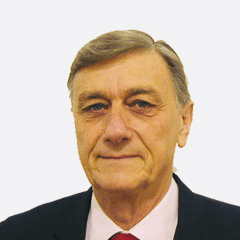Hermes Binner facts for kids
Quick facts for kids
Hermes Binner
|
|
|---|---|
 |
|
| Governor of Santa Fe | |
| In office December 10, 2007 – December 10, 2011 |
|
| Vice Governor | Griselda Tessio |
| Preceded by | Jorge Obeid |
| Succeeded by | Antonio Bonfatti |
| Mayor of Rosario | |
| In office December 10, 1995 – December 10, 2003 |
|
| Preceded by | Héctor Cavallero |
| Succeeded by | Miguel Lifschitz |
| Personal details | |
| Born |
Hermes Juan Binner
June 5, 1943 Rafaela, Santa Fe Province, Argentina |
| Died | June 26, 2020 (aged 77) Casilda, Santa Fe Province, Argentina |
| Political party | Socialist Party |
| Alma mater | National University of Rosario |
| Profession | Physician |
| Website | Official website: http://www.hermesbinner.com.ar |
Hermes Juan Binner (born June 5, 1943 – died June 26, 2020) was an Argentine doctor and politician. He served as the Governor of Santa Fe province from 2007 to 2011. Binner made history as the first member of the Socialist Party to become a governor in Argentina. He was also the first non-Peronist leader in Santa Fe since 1983.
Before becoming governor, Binner was a representative in the National Congress. He was part of a group of parties called the Civic and Social Progressive Front. This group included the Socialist Party and other left-leaning parties.
Contents
About Hermes Binner
Early life and education
Hermes Binner was born and grew up in Rafaela, a city in Santa Fe Province. His family was from Switzerland. He went to primary school at St. Joseph's College. Then, he attended high school at Rafaela National College. Here, he started getting involved in politics by joining the Student Center. At that time, people in Argentina were discussing if public education should be free and not linked to religion.
Binner later moved to Rosario to study medicine at the National University of Rosario. When he was 18, he joined the Argentine Socialist Party. He stayed very active in politics, both in student groups and within the university's medical faculty. After a military takeover in 1966, he joined movements that opposed the military government.
He finished his medical studies in 1970. He continued his political work as a member of the University's Graduate Council. He also worked with medical unions in Rosario.
His political journey
In 1972, Hermes Binner helped create the Popular Socialist Party (PSP). This new party was formed by combining the Argentine Socialist Party with other groups.
He continued working as a doctor, specializing in areas like anesthesiology and public health. He even became a director of public hospitals.
In 1989, Argentina faced a big economic crisis. This led to the mayor of Rosario, Horacio Usandizaga, resigning. New elections were held, and Héctor Cavallero, a Socialist, became mayor. Mayor Cavallero then appointed Binner as the Public Health Secretary.
After Cavallero's time as mayor, Binner was elected to the City Council in 1993. His work on the council helped him become a candidate for mayor in 1995.
Mayor of Rosario City
Hermes Binner was elected Mayor of Rosario in 1995. He was re-elected in 1999, serving two four-year terms until 2003. He then ran for governor of Santa Fe province. He received more votes than any other candidate. However, due to a special voting system called Ley de Lemas, his party lost the election to the Peronist Party.
During his eight years as mayor of Rosario, Binner focused on several key ideas:
- Decentralization: The city was divided into several large areas called districts. This moved government services closer to the people in their neighborhoods. It also allowed citizens to have more say in local decisions.
- Focus on public services: His government greatly improved public health, education, and cultural activities. The city's health plan was even recognized by the Pan-American Health Organization as a great example for other cities in Latin America.
- Rosario's importance: Binner worked to make Rosario a key city with strong economic and political influence. He helped create Mercociudades, a group of cities in the Mercosur trade bloc.
In December 2003, the United Nations praised Rosario's people and government. They called it a model of democratic leadership among 257 cities in Latin America.
Miguel Lifschitz, one of Binner's former city officials, took over as mayor after him. Lifschitz continued many of Binner's policies and was re-elected in 2007.
National Representative
In 2005, Binner ran for a seat in the National Chamber of Deputies. This is the lower house of Argentina's Congress. He ran as part of the Progressive, Civic and Social Front. This group included the Socialist Party and other parties.
Binner won the election, along with six other candidates from his group. They won by a good margin over their main opponents.
Governor of Santa Fe Province
In 2007, Binner ran for governor of Santa Fe again. His running mate for vice-governor was Griselda Tessio. They ran against Rafael Bielsa. Binner was supported by Elisa Carrió, another important political leader.
Binner won the provincial election on September 2, 2007. He won by a significant difference, getting 48% of the votes compared to Bielsa's 38%. He officially became governor on December 11. This made him the first Socialist governor in Argentina's history. He was also the first governor in Santa Fe not from the Justicialist Party since 1983.
Even though Binner was from an opposing party, he kept a good relationship with the national presidents, Néstor Kirchner and his wife Cristina Fernández de Kirchner. In 2011, Binner decided to run for president of Argentina. He chose Norma Morandini as his running mate. Antonio Bonfatti, a long-time friend and ally, was elected to take Binner's place as Governor of Santa Fe.
Running for President in 2011
On June 11, 2011, the Socialist Congress chose Hermes Binner and Norma Morandini to run for president and vice-president. They represented a new group called the Broad Progressive Front. This group included the Socialist Party and other "democratic left" parties.
In the primary elections for president on August 14, 2011, Binner came in fourth place with 11% of the votes. In the main general elections on October 23, 2011, he came in second place with 17% of the votes. Cristina Fernández de Kirchner won the election.
His passing
Hermes Binner passed away on June 26, 2020. He was 77 years old. He died from pneumonia at a clinic in Casilda.
Images for kids
See also
 In Spanish: Hermes Binner para niños
In Spanish: Hermes Binner para niños


